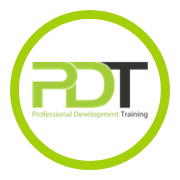Financial modelling is widely employed within industry because it forces us to critically think about how a business or project will perform in the future, as well as how risky we believe it to be.

This course is a combination of financial theory and practical application of financial concepts in Microsoft Excel. A large component of the course will be centred around the application of the Discounted Cash Flow Model (DCF), a popular valuation method used to assess the value of projects and companies.
At the completion of this course, participants should be able to construct a DCF Model, as well as have a good understanding of the underlying financial concepts used to build it.
Your Learning Outcomes:
Financial modelling is widely employed within industry because it forces us to critically think about how a business or project will perform in the future, as well as how risky we believe it to be. Additionally, in constructing a DCF model, you will need address many of the corporate finance issues commonly encountered within industry today.
Finance plays a central role in almost all industries, and acquiring foundational knowledge benefits almost all working professionals. Some examples include the following:
Investment Bankers: employ financial models to help them triangulate a “market price” for the firm/business they are trying to sell.
Engineers: use financial models to help them evaluate the feasibility of new projects, such as mine sites, oil wells, and manufacturing plants.
Lawyers: are commonly asked to develop cases regarding the assumptions used to value assets/businesses/projects, and whether these assumptions were appropriate.
Board members/Executives: need a working knowledge of basic finance to understand merger and acquisition deals, as well as how best to structure their firm.
Outline:
PD Training is a leading provider of professional development training with the world class post-course reinforcement framework
With offices in Australia, New Zealand, USA and Singapore, PD Training is a world class provider of staff training solutions with a focus on Professional Development Skills and Six Sigma training. We have around 1000 trainers across Australia, New Zealand and the USA provide the best possible adult education and the world's leading post-course reinforcement system
© 2025 coursetakers.com All Rights Reserved. Terms and Conditions of use | Privacy Policy